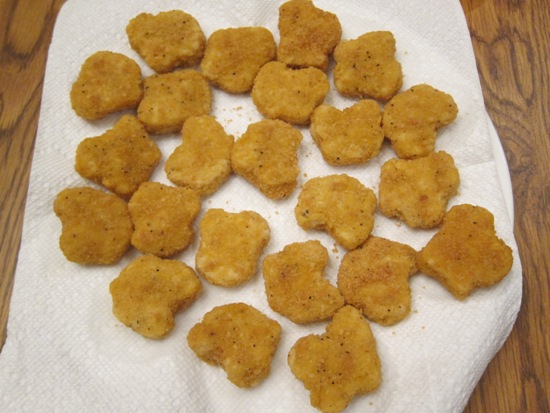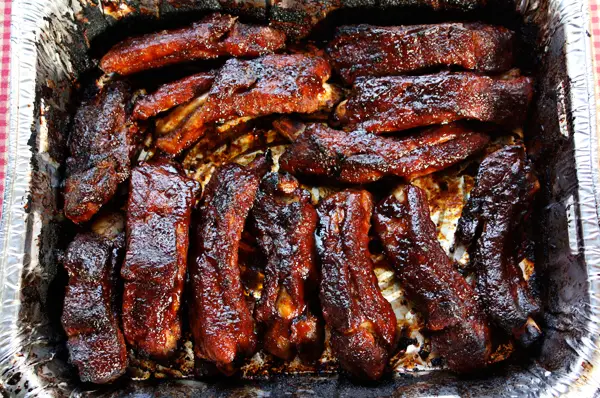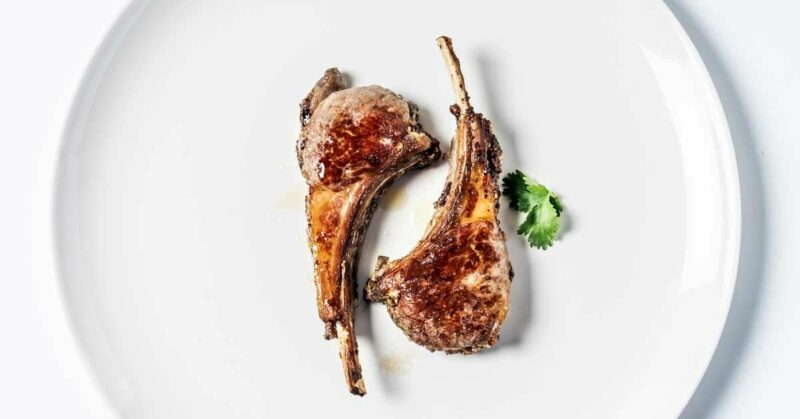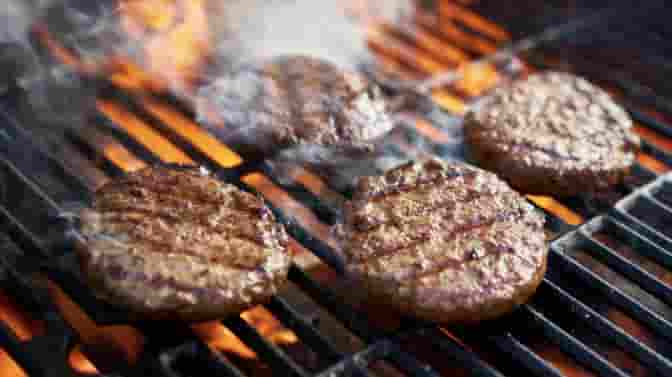Frozen cooked chicken is a convenient option for meal prepping and leftovers. However, reheating it can pose some challenges, especially when using a microwave. In this article, we will explore whether or not you can put frozen cooked chicken in the microwave and provide tips for doing so safely.
Understanding Frozen Cooked Chicken
Before discussing whether or not you can put frozen cooked chicken in the microwave, it’s essential to understand what it is. Frozen cooked chicken refers to leftover chicken that has been cooked previously and frozen for later use. It’s important to note that freezing food does change its texture and degrades the quality over time.
To prepare frozen cooked chicken for microwave cooking, it’s crucial to first thaw it properly. You should thaw the chicken by transferring it from the freezer to the fridge and let it sit overnight until fully defrosted. Alternatively, you can defrost frozen chicken using cold water or a microwave’s defrost function. However, keep in mind that defrosting methods aside from thawing in the fridge could result in uneven microwaving.
Reasons Why People Opt to Reheat Frozen Cooked Chicken in the Microwave
There are several reasons why people choose to reheat frozen cooked chicken using a microwave oven:
Convenience
Microwaving offers convenience since most people have access to one at home or work, making them an excellent appliance for quick reheating.
Time-saving
Microwaves cook food faster than ovens and stovetops because they heat up water molecules directly inside food portions instead of warming up air around them.
Health reasons
Microwaving requires little-to-no oil compared with frying or sautéing methods that typically require more fat and calories.
The Drawbacks of Microwaving Frozen Cooked Chicken
Microwaving frozen cooked chicken also poses some limitations:
Texture issues
Since microwaves do not evenly distribute heat throughout food, reheating frozen cooked chicken in a microwave can lead to uneven heating that causes overcooked or dry spots. The outcome could result in rubbery and chewy chicken.
Safety considerations
When microwaving frozen cooked chicken, there are two primary safety considerations:
Bacterial contamination risks
Microwave ovens do not distribute heat evenly and may leave some areas of food undercooked. In these unheated portions remain bacteria culture, the outcome is increased bacterial contamination risks. Moreover, improper thawing methods increase exposure to bacterial pathogens that develop during the freezing process.
Undercooked meat risks
Undercooking poses a danger because of the potential for harmful bacteria growth that thrives on undercooked food containing moisture like cold cuts, raw beef, poultry, pork, and lamb products.
How to Safely Microwave Frozen Cooked Chicken
To avoid the issues discussed previously when reheating frozen cooked chicken in a microwave oven do the following.
Guidelines for safe microwave cooking
The USDA recommends using a meat thermometer and checking internal temperatures before consuming meat or poultry to ensure their safety. When microwaving frozen cooked chicken follow these temperature considerations:
- For whole boneless duckling chickens’ pieces (breast, thighs) should reach an internal temperature of 165°F (74°C).
- For whole bone-in duckling chickens with giblets inside cavity: breasts – 165°F thigh – legs – 175°F (79°C).
Moreover, also consider time when microwaving your dish as most manufacturers provide specific instructions within each product packaging. Follow directions carefully, taking into account wattage and thickness when determining cook times.
Techniques for preserving texture and moisture
To keep your reheated frozen cooked chicken moist and tender while warding off textural issues:
- Dice or slice larger chunks of frozen cooked chicken before microwaving. Smaller pieces will reheat more evenly than larger ones.
- Cover your dish with plastic wrap or a lid to trap in steam and moisture; place them in a microwavable container.
- Place them on top of any vegetables or stuffing underneath to get the best cook, adding moisture below meat.
Alternative Methods for Reheating Frozen Cooked Chicken
If you don’t prefer to use the microwave for reheating frozen cooked chicken, several alternative methods can do the trick. Such include:
Using an oven
Reheating frozen cooked chicken using an oven requires more time than using a microwave. To bake your leftover dish to perfection, preheat your oven up to 375°F (190°C) and cook between 20 and 30 minutes.
Using a stovetop
Frozen cooked chicken can be reheated on the stove by warming it 10 –15 minutes over medium heat then let it rest for five minutes before consuming.
Pros and cons of each method
The following are advantages and disadvantages of both alternative methods:
Oven Method
Pros:
- Consistent temperature throughout cooking process
- Retains food’s original texture/taste
Cons:
- It takes more time
- Consume more energy than microwaves
Stovetop Method
Pros:
- Quicker than ovens since cooking takes place directly over heat
- Requires minimal energy consumption compared with oven
Cons:
- Temperature control is less exact than both microwaves and ovens
- Long heating can cause unwanted toughness / rubbery textures if not watched carefully
Additional Tips for Microwaving Frozen Cooked Chicken
Using these tips will help you better utilize microwaves while also minimizing food waste at home:
Best practices for meal planning and storage
Freezing is an excellent way to save meals long term like when freezing cooks chicken breast, cool it off before wrapping your favorite meats tightly. Additionally, labeling bags or containers illustrates what’s inside helps with quickly learning what’s in the freezer.
Freezing, defrosting, and portion control strategies
Prevent food waste by freezing meals. For frozen cooked meals with unsatisfactory textures, consider adding leftover vegetables or olive oil for a sought after savor – pasta dishes are fantastic for leftovers in this way!
Portion control is also critical when it comes to microwaving leftover chicken. Use a smaller plate or container to force appropriate serving sizes on before microwaving.
Conclusion
Microwaving frozen cooked chicken is an easy and quick solution that provides convenience while saving time in cooking. However, there are safety risks that require undue care and attention due to bacterial contamination and undercooked meat consumption risks. To retain texture and moisture when preparing frozen cooked chicken via microwave ovens, consider dicing larger chunks of meat and covering dishes during the cook period to lock in moisture. Alternatively, those who find textural issues unmanageable may prefer using an oven or stovetop instead of their microwave at home. Whatever you choose as your go-to reheating option follows its guidelines carefully regarding temperature controls and cooking times.
Q&A
- Q: Can I put frozen cooked chicken in the microwave? A: Yes, you can put frozen cooked chicken in the microwave, but it’s important to do so correctly to ensure safety and optimal taste.
- Q: Is it safe to reheat frozen cooked chicken using a microwave? A: As long as you follow proper food handling and reheating guidelines, it is generally safe to use a microwave to reheat your frozen cooked chicken.
- Q: What’s the best way to reheat frozen cooked chicken in a microwave? A: To reheat frozen cooked chicken properly in the microwave, take it out from the freezer and place it on a microwave-safe dish or container. Then, heat for two minutes on high heat and stir before heating again until completely warmed throughout.
- Q: Why do some people avoid reheating cooked chicken in the microwave? A: Some people may avoid using microwaves for reheating cooked chicken due to concerns about uneven heating that can result in undercooked portions of meat or potential health risks associated with using plastic containers or wraps that could leach harmful chemicals during the reheating process.




